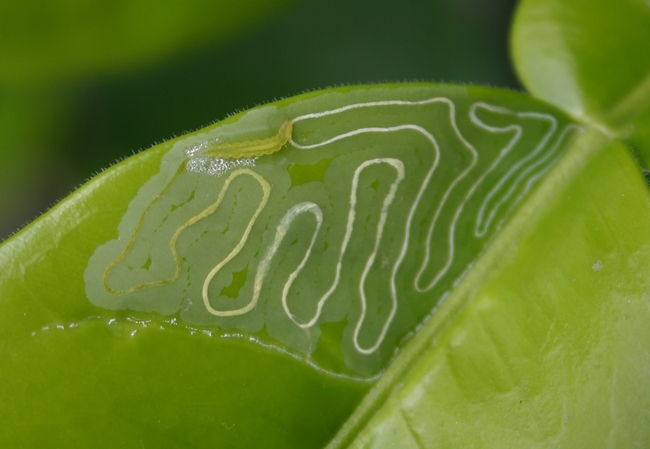[This post has been modified from the article originally published in the Fall 2018 issue of the Retail Nursery and Garden Center IPM News.]
Citrus leafminer is a moth that arrived in California in 2000 and has invaded citrus throughout the state. This small moth lays its eggs on new, succulent citrus leaves. The larvae burrow through the soft leaf tissue, creating shallow meandering tunnels, or mines (Figure 1). Larval feeding causes the leaf to curl and distort. Mature citrus trees are less frequently attacked since most of their tough leaves are resistant to the leafminer, but very young trees with their higher proportion of young, tender leaves, are more susceptible. This can slow growth of young trees but even those with heavy leafminer damage are unlikely to die.
In home landscapes, citrus leafminers are killed by many natural enemies—other insects and spiders that attack pest insects. Insecticides don't work very well on this pest because it is inside the leaves. If you can, try to ignore leafminer damage since citrus can tolerate it. The leaves damaged by leafminers will continue to produce food for the tree, so they do not need to be removed. If you remove them, it will stimulate the tree to produce more new leaves, which will be attacked by the leafminer and more damage will appear.
For more information about management techniques, see the Pest Notes: Citrus Leafminer.
Looking for other citrus insect pests? Check out our related posts on mealybugs and cottony cushion scales, Asian citrus psyllid, and ant control for Asian citrus psyllid.
